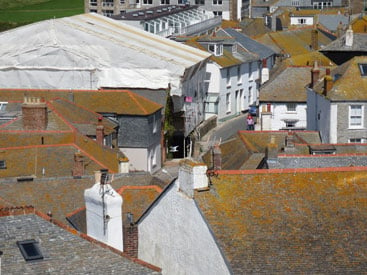Canon ELPH 110 HS / IXUS 125 HS review
-
-
Written by Ken McMahon
Intro
The Canon ELPH 110 HS, known outside North America as the IXUS 125 HS, is a 16.1 Megapixel compact with a 3in screen and a 5x zoom lens. Announced in January 2012 it will likely replace the ELPH 100 HS / IXUS 115 HS. As well as a boost in resolution from 12.1 to 16.1 Megapixels, increased zoom range, and higher resolution 460k pixel screen the ELPH 110 HS / IXUS 125 HS features the more recent DIGIC 5 processor which provides it with enhanced scene detection and Face ID features. The new model retains the 1080p24 best quality video mode with Super Slow Motion and Miniature modes, adding Smart Auto exposure mode for movies and the edit-friendly Apple iFrame format.
Released at the same time, the ELPH 520 HS / IXUS 500HS has a 10.1 (effective) Megapixel CMOS sensor and, with the same DIGIC 5 processor, shares many of the ELPH 110 HS / IXUS 125 HS’s user-friendly features. But with a 12x zoom range it can you much closer to the action, all in a compact body with a price tag only around 25 percent more. In my review I’ll compare them both.
 |
Canon ELPH 110 HS / IXUS 125 HS Design and controls
Measuring 93.2 x 57 x 20mm and weighing 135g with battery and card, the ELPH 110 HS / IXUS 125 HS is almost exactly the same dimensions and a tiny bit lighter than its predecessor. The proportions are the same, but the design has evolved into a slightly harder-edged version, the rounded edges are still there, but with a tighter radius. The front of the camera looses the silver-coloured lens bezel and is now all the same colour and the AF illuminator has been repositioned underneath the built-in flash. It all looks good, except for the new HS badge (signifying the High Sensitivity characteristics of the CMOS sensor) which is slightly at odds with the otherwise classy and up-market sensibilities of the ELPH / IXUS styling.
On the top plate the control layout is unchanged with an auto/alternate mode switch, on/off button and shutter release with zoom collar. The design of the controls is very different though, Canon opting for shiny black buttons with matt surrounds in contrast to the earlier silver ones. It’s the same story on the back panel with the control layout shifted around a little but still comprised of a four-way controller, dedicated movie record button, menu and playback buttons. This time the colour scheme is the same as the camera body with a matt black disc on the four-way controller. Overall the effect is modern, stylish and functional and, while it’s inevitably a personal choice, I really like it.
In terms of handling the only criticism I’d make is that the four-way controller, which sits flush with the rear panel is difficult to manipulate with your thumb, it’s easier with your nail or index finger.
 |
The ELPH 110 HS / IXUS 125 HS has a 3 inch LCD screen with 460k dots. This is now more or less the standard screen used across the Canon Compact range and provides a bright, contrasty and detailed view with a wide range of viewing angles – it’s very good for overhead shots providing you hold your outstretched arms a little forward. The screen proportions are 4:3 so it’s ideal for shooting stills which use the full screen area, when shooting movies the view is letter boxed with black bands top and bottom.
A soft cover on the right side of the body protects the USB / A/V and mini HDMI ports. Like most manufacturers, Canon includes a USB cable for connecting to a PC and downloading pictures and movies, but if you want to connect the camera to a standard reolution or HD TV you’ll have to shell out for a suitable cable, one isn’t included in the box.
The combined battery and card compartment is on the base of the camera and, in contrast to the generally high build quality, the hinge feels slight and flimsy. When it’s closed it fits securely enough though. The ELPH 110 HS / IXUS 125 HS takes an NB11L battery which provides enough power for 170 shots on a full charge and is charged outside the camera using the supplied charging unit.
The built-in Flash is situated on the top edge of the front panel near the left corner so you need to take care to keep your fingers out of the way when it’s in use. It has Auto, On, Off and Slow Synchro modes with Red Eye reduction using the AF lamp as well as a built-in software fix. The quoted range is 3.5 metres at the wide angle end of the zoom range, which is average, and in practice the flash provided bright, even illumination for subjects close to the camera. If you want a bit more power you can attach the HF-DC2 optional external flash.
Canon ELPH 110 HS / IXUS 125 HS lens and stabilisation
The ELPH 110 HS / IXUS 125 HS has a 5x optical zoom with an equivalent range of 24-120mm. For Canon at least, 5X is the new 4X and is the lowest zoom range available on any 2012 compact – with the notable exception of the enthusiast-targetted PowerShot G1 X. This is the same lens as on the more expensive touch-screen ELPH 320 HS / IXUS 240 HS and these two models are the only ones in the range to offer a super-wide 24mm field of view – the longer zooms all start at 28mm. But while the 24mm wide angle is great for interiors, group shots and landscapes, Canon still has nothing to match the Panoramic modes that have long been a feature of Sony Cyber-shots and more recently Panasonic, Nikon and Fujifilm compacts.
Canon ELPH 110 HS / IXUS 125 HS coverage wide |
Canon ELPH 110 HS / IXUS 125 HS coverage tele | |
 |  | |
| 4.3-21.5mm at 4.3mm (24mm equivalent) | 4.3-21.5mm at 21.5mm (120mm equivalent) |
All 2012 Canon compacts employ the Intelligent IS lens-shift image stabilisation system which compensates for camera shake permitting hand-held shots at slower shutter speeds than would ordinarily be possible. It’s intelligent because it can sense the direction of movement of the camera and sets the appropriate stabilisation mode – Normal, Panning, Macro or Tripod (off). It has three positions, Continuous, Shoot only and off. To test Intelligent IS on the ELPH 110 HS / IXUS 125 HS I took a series of hand-held shots in Program Auto mode at different shutter speeds with the lens set to its maximum zoom setting of 120mm (equivalent), both with IS set to Continuous and turned off. The crops below are from shots taken at 1/8 with the IS turned off (left) and on Continuous (right). At 1/8th of a second the ELPH 110 HS / IXUS 125 HS produces a sharp result more than bearing out Canon’s claims with four stops of effective image stabilisation.
Canon ELPH 110 HS / IXUS 125 HS IS Off / Continuous | ||||
 |  | |||
100% crop, 4.3-21.5mm at 4.3mm, 100 ISO 1/8th IS Off. | 100% crop, 4.3-21.5mm at 4.3mm, 100 ISO 1/8th IS Continuous. | |||
Canon ELPH 110 HS / IXUS 125 HS shooting modes
With the mode switch set to Smart Auto the ELPH 110 HS / IXUS 125 HS uses scene detection to determine the optimum exposure. The Digic 5 processor can detect more scene types than the Digic 4 in the ELPH 100 HS / IXUS 115 HS, with 58 as opposed to only 32 in its predecessor. Like the Digic 4, the Digic 5 can detect whether the scene includes people and knows if they are moving and can also adjust for various lighting conditions including backlit subjects, sunsets, and night shots and it knows if you’ve mounted the camera on a tripod. Additionally, it can tell if your subject is a child or a baby and whether it’s smiling or sleeping.
The Digic 5 also supports Face recognition which Canon calls Face ID. You can register name and date of birth information for up to 12 people and focus and exposure is prioritised when that person’s face appears in the frame. The focus area is labelled with the names of up to three people, which is fun, though, given you probably know who they are, of limited real utility, but you can turn this feature off. More usefully, the images are tagged with the names, so you can search for photos of named individuals, but only on the camera. For reasons best know to themselves, Canon doesn’t write the name info to the image file in a format that’s accessible by software.
Turn the mode switch to the position indicated with a camera icon and you have the choice of 21 other shooting modes. What used to be called Creative Effects are now bundled in with the other scene modes and include Monochrome, Toy Camera, Fish-eye, Super Vivid, Poster Effect, Colour Accent, Colour Swap and Miniature. Handheld Night Scene mode takes three shots in quick succession and composites them to produce a single image.
| Canon ELPH 110 HS / IXUS 125 HS Creative Effects | ||
 |
 |
 |
The Smart Shutter scene mode is included which can fire the shutter up to 10 times when a smile is detected, and includes Face, Smile, and Wink self-timer functions so that you can include yourself in a group photo without dashing around like a lunatic. There’s also Canon’s innovative movie digest mode which saves a buffered movie clip of the action a few seconds prior to each still shot and combines them all into single movie.
Canon ELPH 110 HS / IXUS 125 HS movie modes
The entire ELPH / IXUS range has supported Full HD video recording since 2011 and the ELPH 110 HS / IXUS 125 HS continues to offer the 1080p24 best quality mode of its predecessor. It also has a 720p30 mode and both of these are encoded with the H.264 codec and saved as QuickTime .mov files. The single clip limit for 1080p24 is up to 4GB or 10 minutes, whichever comes soonest and Canon recommends a Speed Class 6 card or faster.
Like the ELPH 100 HS / IXUS 115 HS before it, the ELPH 110 HS / IXUS 125 HS has a mono mic, but the good news is the optical zoom can now be used during movie recording; it is slowed down significantly and makes very little noise. Movie exposure is automatic but, unlike its predecessor the ELPH 110 HS / IXUS 125 HS can use Smart Auto mode with scene detection when you shoot in intelligent Auto mode. You can also shoot in some scene modes including Portrait, Monochrome, Colour Accent and Miniature mode. As with earlier Canon compacts you have to first switch to 16:9 still image format to shoot in effects modes at 720p resolution, otherwise it defaults to 640×480. There’s also Super Slow Motion Movie mode with a choice of two resolution-dependent frame rates; 120fps at 640×480 and 240fps at 320×240.
| |
|---|---|
|
Outdoors the ELPH 110 HS / IXUS 125 HS produces good quality video, thought the colour balance is a little cooler than stills. The stabilisation does an excellent job at the relatively modest maximum zoom of 120mm and though the focus wanders a tiny bit dusing the zoom it’s quick to correct.
| |
|---|---|
|
Stabilisation was disabled for this outdoor tripod mounted panning shot. The mono mic is quite susceptible to wind noise and with no filter, there’s not a lot you can do, except maybe shield the mic with your hand. The zoom motor is quiet, but not silent – you can hear a faint buzzing on the audio (even with the wind noise) when it’s operating.
| |
|---|---|
|
In this indoor low light panning shot the ELPH 110 HS / IXUS 125 HS responds dramatically to the changing lighting, but without stepping. Noise is noticeable and white balance is also a little variable.
| |
|---|---|
|
The ELPH 110 HS / IXUS 125 HS can shoot video using some Creative Effects filters. Here’s Miniature mode with playback at 10x producing a six second clip from a minute’s worth of shooting. Other options are 5x and 20x. As mentioned previously you’ll need to remember to switch the photo aspect ratio to 16:9 to record the effects in 720p or you’ll end up with them in VGA.
Canon ELPH 110 HS / IXUS 125
handling
From start up, the ELPH 110 HS / IXUS 125 HS is ready to take a shot in a fraction under two and a half seconds, which is about average. The zoom is a little buzzy and it’s also pretty nifty which means it covers the 5x range in about a second and a half, but fine nudge control isn’t one of it’s strengths.
Canon’s 9-point area AF and Face AiAf systems have proved themselves on past generations of ELPH / IXUS and PowerShot models and are supplemented by tracking AF which, once it locks onto a subject, is very sticky, even indoors.
 |
 |
 |
The ELPH 110 HS / IXUS 125 HS can shoot full resolution images at a meagre 2 frames per second, but if you’re prepared to sacrifice image size you can shoot 4 Megapixel images at a respectable 5.8 fps. I tested the continuous shooting capabilities of the ELPH 110 HS / IXUS 125 HS by fitting it with a freshly formatted Sandisk Extreme Pro UHS 1 card, setting High Speed Continuous mode and holding the shutter down for 10 seconds. The ELPH 110 HS / IXUS 125 HS managed to sustain a regular speed but at 4.9fps rather than the quoted 5.9fps.
The ELPH 110 HS / IXUS 125 HS has a 16.1 megapixel CMOS sensor which produces photos with a 4:3 aspect ratio at a maximum size of 4608×3456 pixels. Images are stored as JPEG files at one of two compression settings, Fine and Superfine. The best quality Superfine JPEGs are, on average 6 to 8MB in size. The sensitivity range is 100-3200 ISO and the shutter speed range is from 15 seconds to 1/2000.
To see how the quality of the ELPH 110 HS /IXUS 125 HS measures-up in practice, take a look at my Canon ELPH 110 / IXUS 125 quality and Canon ELPH 110 / IXUS 125 noise results pages, browse my Canon ELPH 110 / IXUS 125 sample images, or skip to the chase and head straight for my verdict.
 The ELPH 110 HS / IXUS 125 HS provides a great balance of features at a very affordable price point for a premium compact and is a worthy recipient of a Cameralabs Highly Recommended award. While it's still around though, the ELPH 100 HS / IXUS 115 HS is also well worth considering if discounted, though it only has a 4x zoom which can't be used while movie recording and lacks Digic 5 features like Face ID and Intelligent IS.
The ELPH 110 HS / IXUS 125 HS provides a great balance of features at a very affordable price point for a premium compact and is a worthy recipient of a Cameralabs Highly Recommended award. While it's still around though, the ELPH 100 HS / IXUS 115 HS is also well worth considering if discounted, though it only has a 4x zoom which can't be used while movie recording and lacks Digic 5 features like Face ID and Intelligent IS.



